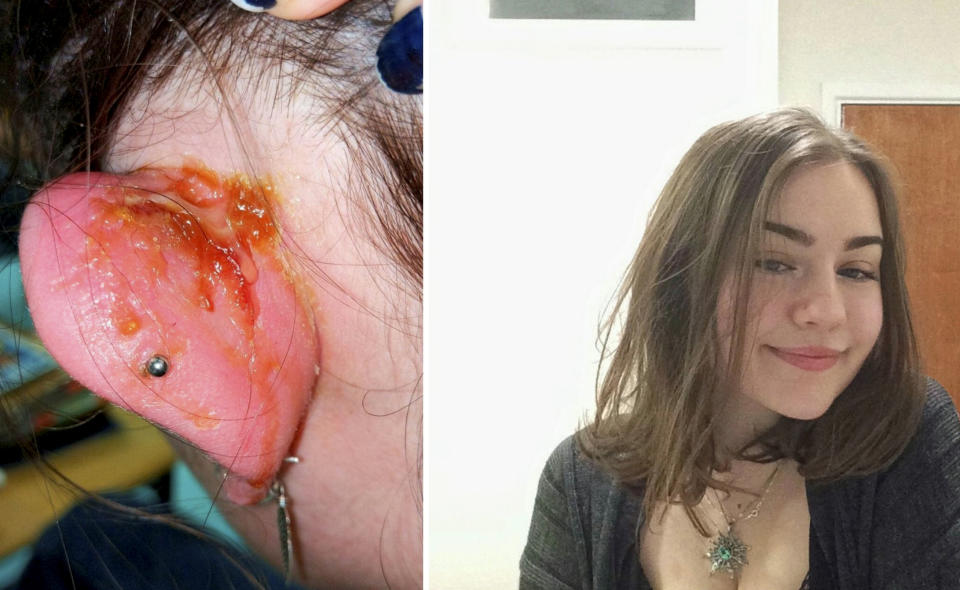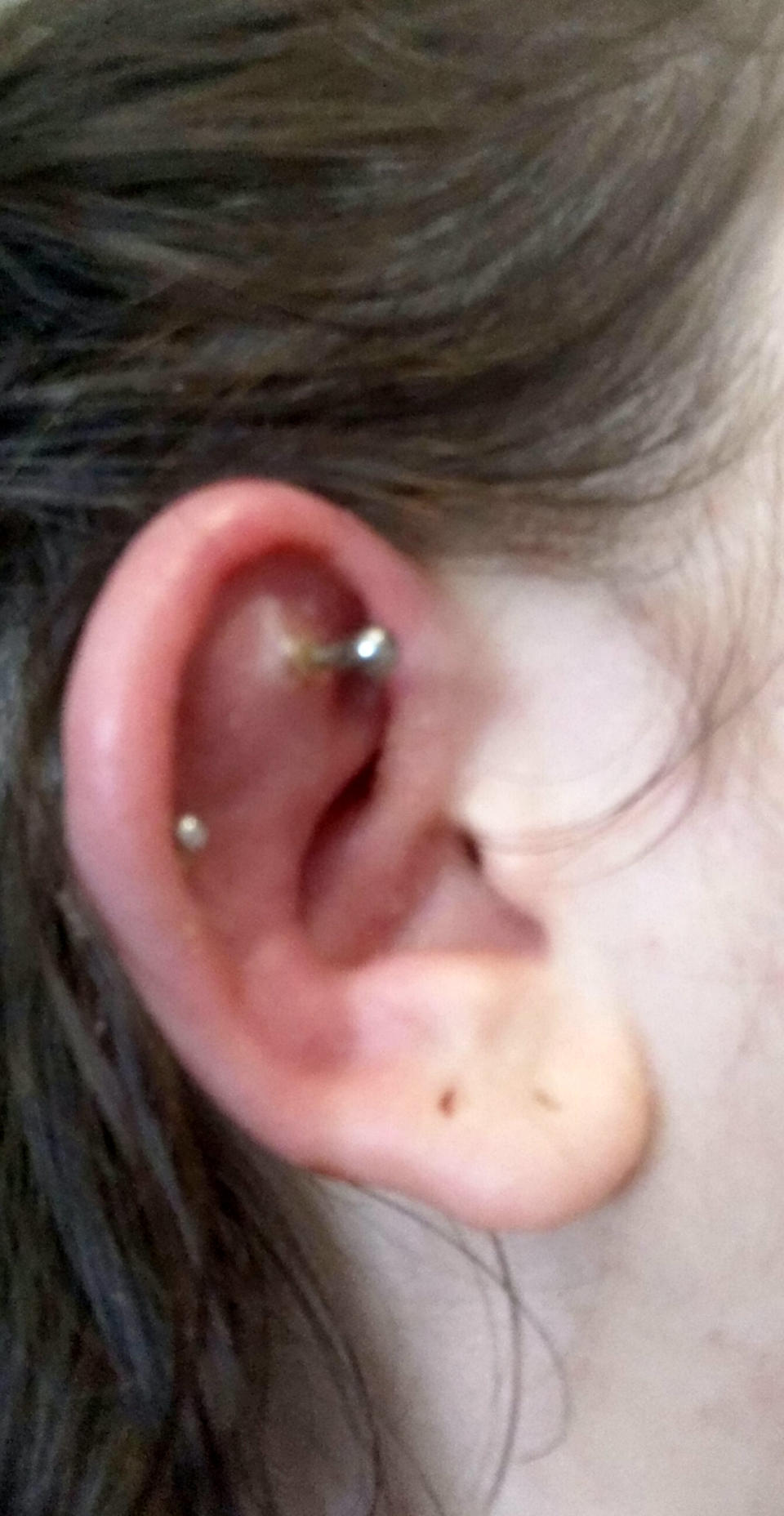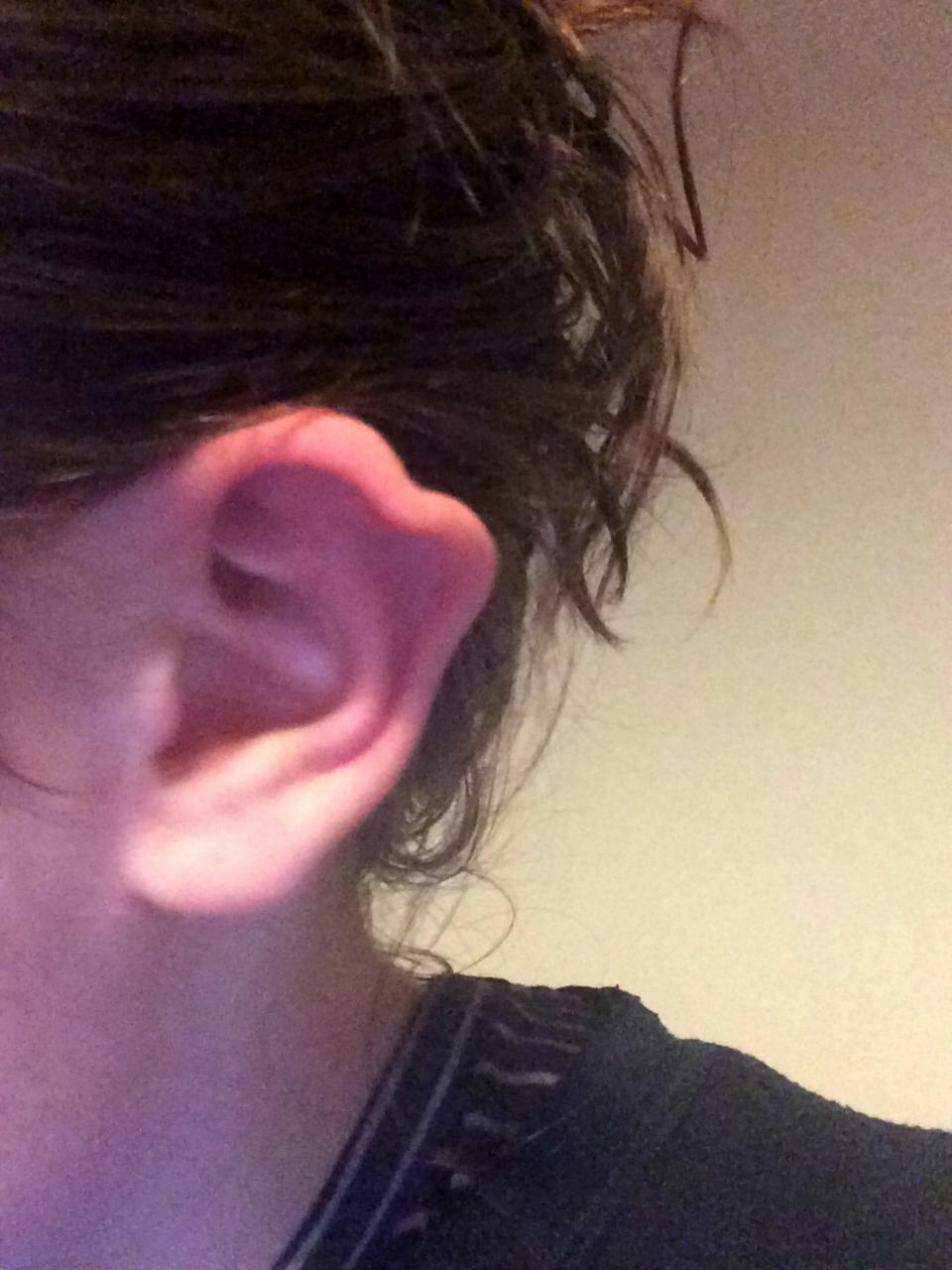Woman is left with a deformed ear after piercing became infected and had to be sliced out
Warning — graphic images
A woman needed emergency surgery and was left with a “deformed” ear after her piercing became infected and had to be sliced out.
Stella Blezard, 19, spent £30 on a piercing in the cartilage of her ear earlier this year but within hours it was bright red.
The next morning she woke up in agony to find her ear was swollen and crusty and, having visited her GP, was given a round of antibiotics.

But after a week her ear continued to swell and fill with puss, so she decided to go to A&E to get it checked.
There she was put on an IV drip and was told doctors would need to perform emergency surgery as her ear had become dangerously infected.
The operation saw doctors slice open Blezard’s ear to retrieve the piercing, leaving a “heart-shaped” dent.
Read more: One in five procedures like tattoos and piercings end up infected

Now the University of East Anglia student wants to warn others about the potential dangers of infections following piercings.
“My ear was so swollen it actually covered my piercing,” she says.
Though Blezard has had other piercings done before, she says this one really hurt straight afterwards.
“The next day it was just really red which I thought was a bit weird,” she says.
“I try not to tuck my hair behind my ears, so I don’t bring attention to it.
“I just wanted a piercing and now have been left with permanent damage.”
Watch: How this Jewellery brand turns ears into stud masterpieces
How to look after a new piercing
According to Dr Rekha Tailor a former GP and now cosmetic doctor at Health &Aesthetics after having a new piercing it is quite usual for the skin to be tender red, itchy and more delicate than usual for the first few weeks.
“White skin may appear a bit red and dark skin may look darker than usual. It may also be giving out a pale fluid that forms a crust. This is all normal and nothing to worry about,” she adds.
If the area you’ve had pierced is your nose or ear, Dr Tailor says you may notice some lumps around the piercing site.
“These are pockets of trapped fluid called granulomas and can be treated by soaking a cotton pad (avoid cotton wool as it has small fibres which can clog in it) in warm water and holding it against the area,” she explains.
Read more: Bride and groom-to-be devastated after getting date of cancelled wedding tattooed on their arm
In order to look after a new piercing properly Dr Tailor recommends cleaning it twice a day with warm, salty water, which will help to soften any crusting.
“Try to turn the piercing while you’re cleaning it and dry it afterwards. If it’s a mouth piercing you can use salt water or an alcohol free mouth wash to gargle with,” she adds.
You should also try to avoid touching the area too often or with dirty hands, as this can transfer bacteria into the wound.
“Also don’t pick the crusting or twist the jewellery when it’s dry,” Dr Tailor adds. “It’s also best to avoid swimming for 24 hours after having a piercing.”
In terms of spotting whether your piercing has been infected, Dr Tailor recommends looking out for the area around the piercing becoming hot, painful or swollen, or extremely red or dark (depending on your skin colour).
“If there’s blood or puss coming out and/or you feel hot, shivery or unwell you should seek medical advice because this could be the sign of an infection,” she says.
Read more: Meet the man giving himself a new tattoo every day during lockdown

Finding a reputable place to get pierced
According to Rhiana Rose, body piercer at Crimson Tear Tattoos the first thing you should look for when looking for somewhere reputable to get a piercing is to find somewhere where the piercer is happy to chat through what you want to get done.
“A reputable place will be able to provide knowledge on aftercare, piercing processes but also provide advice on places to get pierced if you’re not 100% sold on one area,” she says.
“Piercing and tattoo studios often have a stigma around them, so it is important to go somewhere you feel comfortable and relaxed, especially if you’re about to get something new.”
Rose says word of mouth can also be important as businesses need to ensure that they’re offering the best level of service and aftercare practices to get people coming back.
“Ask around, look on Instagram, read comments and reviews, call the place you want to go - it’s so important to do your research before making your decision about where to get your piercing.”
According to Rose a reputable piercer will support their customers with aftercare.
“We always recommend that if anyone has any problems to get back in touch. A lot of people try to diagnose issues themselves and treat problems incorrectly, which can make things worse.
“If you’re having issues, go back to the piercer or call them and they should be able to give you the best advice.”
Rose says the main cause for infection is usually aftercare.
“If the piercing itself has been done with sterile equipment, the piercer is wearing gloves and all the jewellery is good quality then there is next to no chance of infection being caused from the piercing itself,” she adds.
Additional reporting SWNS.



